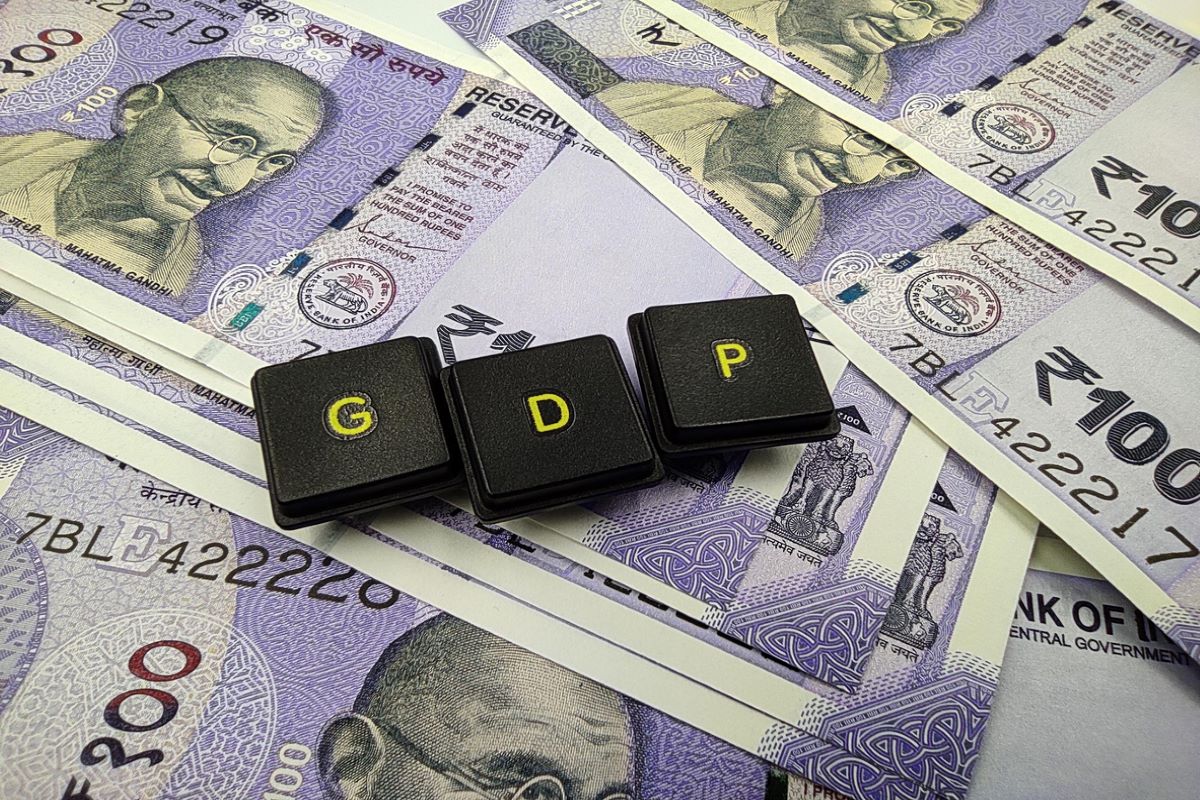Economic growth has conventionally been described by classical economists to be the consequence of capital accumulation and the reinvestment of profits derived from specialization, division of labour, and the pursuit of comparative advantage, thereby supporting free trade among nations, individual free enterprise and respect for accumulation of private property.
The International Monetary Fund has projected global economic growth at 5.9 per cent, 4.4 per cent and 3.8 per cent in 2021, 2022 and 2023, respectively. India’s GDP on the other hand, had doubled to $2 trillion in 2014 from $1 trillion in 2007. IMF (2019) estimates India’s GDP at $3.27 trillion in 2021. Sir J R Hicks, Joan Robinson, Robert Solow, Jan Tinbergen, Simon Kuznets, Jeffrey Sachs, Joseph Stiglitz, T. Schultz, Kenneth Arrow, Paul Krugman and other economists subscribing to the growth theory would hence have viewed India’s Budget of 2022-23 with interest.
The underlying philosophy of Budget 22-23 is investment for growth and, this, the Government of India plans to achieve by laying down a future path for the economy and backs up such a plan with allocations in infrastructure, housing, piped water supply and digital transition. The government’s capital expenditure is projected as Rs 7.5 lakh crore, which is a 35 per cent rise over the previous years.
It represents 2.9 per cent of the GDP which, if compared over last twenty years, is undoubtedly, the highest. What is of particular significance is the government’s intention to enhance spending by way of public investment, which, all said and done, is preferable to consumer spending, as public spending ensures a strong path to sustainable growth, not only propelling growth in the short run but also laying down the foundations for robust future growth.
It has been widely recognized that infrastructure is an enabler of economic growth, triggering significant multiplier effects to energize linkages, and, in improving supply chain efficiency. With such an end in view, the big ticket allocation is on upgrade of infrastructure, spanning roads, railways, airports, ports, waterways and logistics under an umbrella framework of “Gatishakti”.
An additional Rs 1 lakh crore has been set aside to support reforms in the urban infra regime. This budget proposes to add another 2,500 km to the existing 1.4 lakh km National Highway Network, the highest ever in any fiscal. The budgetary allocation for road transport and highways has hence been enhanced by 52 per cent to Rs 1.99 lakh crore.
While the government has provisioned “zero” borrowing by NHAI, it expects to raise Rs. 20,000 crore per year from monetization of Railways in 2022-23, whose budget has witnessed a rise of 16 per cent in in BE 22-23 over RE 21-22. This is apart from permitting the Railways to raise Rs. 1.08 lakh crore from the market for its projects. Rs 48,000 crore has been allotted for the housing sector that is looking at construction of 80 lakh dwelling units in urban areas.
The Pradhan Mantri Awas Yojana (urban) had assessed a total demand for 1.12 crore urban houses. Reportedly, as of January 2022, 1.14 crore houses have been sanctioned, 53.42 lakh houses were completed or delivered, 91.47 lakh houses have been grounded and 17.35 lakh beneficiaries have availed of the Credit Linked Subsidy Scheme (CLSS). Under PMAY (Gramin), the government intends to deliver 1.95 crore houses by 2022. In addition, Rs 60,000 crore has been allotted under the Har ghar Nal se Jal scheme for 3.8 crore households.
The construction sector including housing, has far reaching multiplier effects. While investment in housing has an employment multiplier effect of almost 8, a unit increase in final expenditure in the construction sector would generate about five times additional income in the country. Rs 250 crore has been allotted to each of the institutions designed to nurture urban megacities and their hinterlands to become centres of economic growth.
This budget also intends to introduce systems for modernization of building byelaws, town planning schemes, transit-oriented development as well as Unique Land Parcel identification towards digital management of land records. Another priority sector, telecom, driven by investments in BSNL is expected to revive a tenfold increase to Rs. 55,150 crore.
There is also an intent to assist states via grants-in-aid through 50-year interest free loans for those undertaking capital investment by nearly seven times to Rs 1 lakh crore during the next financial year. Hence along with higher allocation for capex in railways, telecom and highways, loans to states will be the biggest contributor to the higher capital investment plan.
Apart from the multiplier effect, improved infrastructure is a direct outcome of such enhanced capital expenditure. This is expected to raise the competitive efficiency of the economy, raise export capabilities, catalyze multiplier effects on job creation and catalyze economic growth. Some of the multiplier effects will decidedly rub off to the states too, as infra projects will be largely executed in the states. Budget 2022- 23 therefore intends to focus on public spending to propel rising economic activity and demand for inputs to energize the “multiplier effect.”
Economic survey (2022) argues that higher capital expenditure is expected to create a suitable economic backdrop for the private sector to start private investment cycles after exhausting excess capacity in their plants. Public Investment/capex is also intended to catalyze private investment which calls for a stable tax regime especially in the context of direct taxes. Budget 2022-23 does not throw up any surprises in the direct tax regime which, in turn, helps to act as an incentive.
Funding for capex is expected to be generated largely by enhanced tax revenue. Tax receipts as percentage of GDP increased to 11.4 per cent in 2021 22. The budget estimates project that while GST would contribute to 28.20 per cent of total major tax revenue, 26.11 per cent and 25.28 per cent of gross tax revenue would be collected from corporate taxes and direct taxes respectively. Further funding is expected to be released on switching from welfare spending to subsidies on investment, the basic assumption being that growth will reduce the need for targeted support.
The industry is optimistic. In the words of Mr Sanjiv Mehta, President & Chairman, FICCI and Chairman HUL: “The booster shot provided by way of significant large capex outlay will lead to greater demand across industries, push up capacity utilization and private capex, create jobs lead to higher private consumption, bring down cost of business and lead to a virtuous spiral.”
Any growth oriented budget that relies heavily on capital expenditure, however, is fraught with inherent risks. In propounding such a growth-oriented budget, by pushing capital expenditure, the country is exposing itself to the risks of high inflation and, accordingly, the RBI will have to take a call on increasing rates gradually to address inflation. Economic Survey 2022 has indicated the growth rate to be between 8-8.55 per cent and the nominal growth rate to be 11 per cent.
Mr C. Rangarajan, Ex-Governor RBI, would, however, assess that a nominal growth rate should be estimated to be around 13 per cent so as to account for inflation to expect a realistic annual growth rate of 8- 8.5 per cent. R Krishnan, MD and CEO of ICRA, has summed up the Union Budget 2022-23 by stating that while the Budget does contain several confidence-boosting measures in the form of a substantial increase in capital spending, outlays for several public investment schemes and a vision for infrastructural augmentation in the next 25 years, the higher outlays come at the cost of a rise in fiscal deficit in absolute terms.
The challenge therefore lies in containing inflation through a carefully monitored monetary policy, in efficient implementation of expenditure and a prudent fiscal policy framework to address the high level of fiscal deficit at 6.4 per cent of GDP and a debt to GDP ratio of 60.2 per cent in 2022-23 which is way above the desired level of 40 per cent. Well crafted policies and diligently monitored expenditure, could, therefore lead India into the much anticipated trajectory of investment driven growth.
(The writer is a former Secretary to the Government of India)












